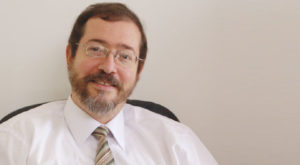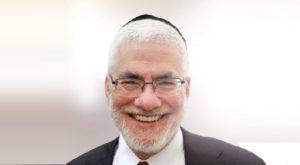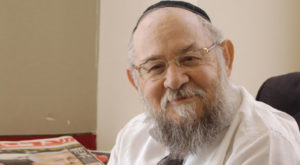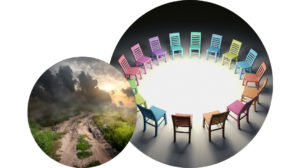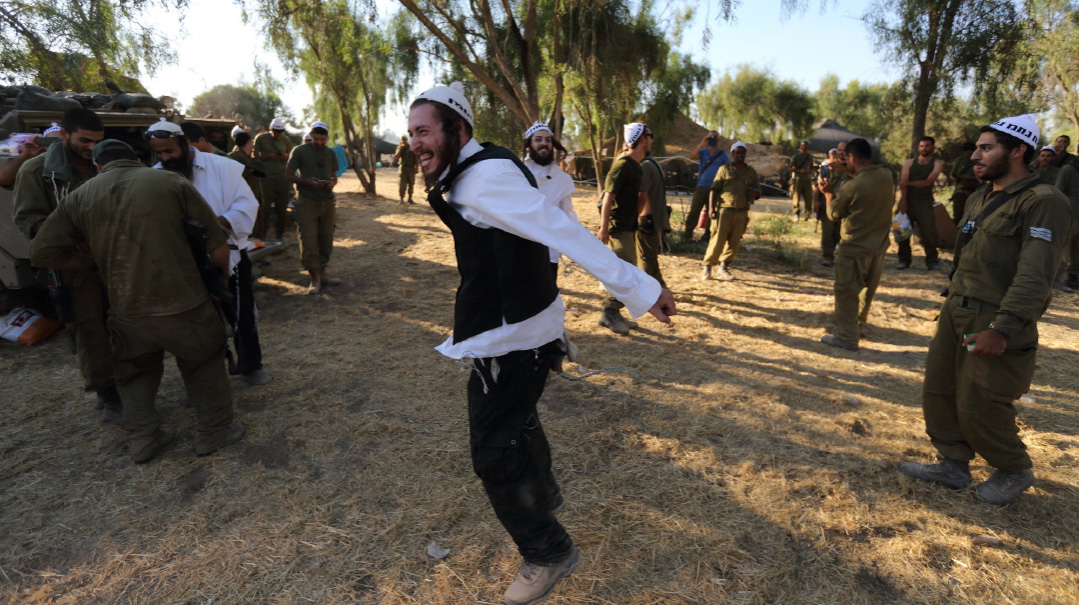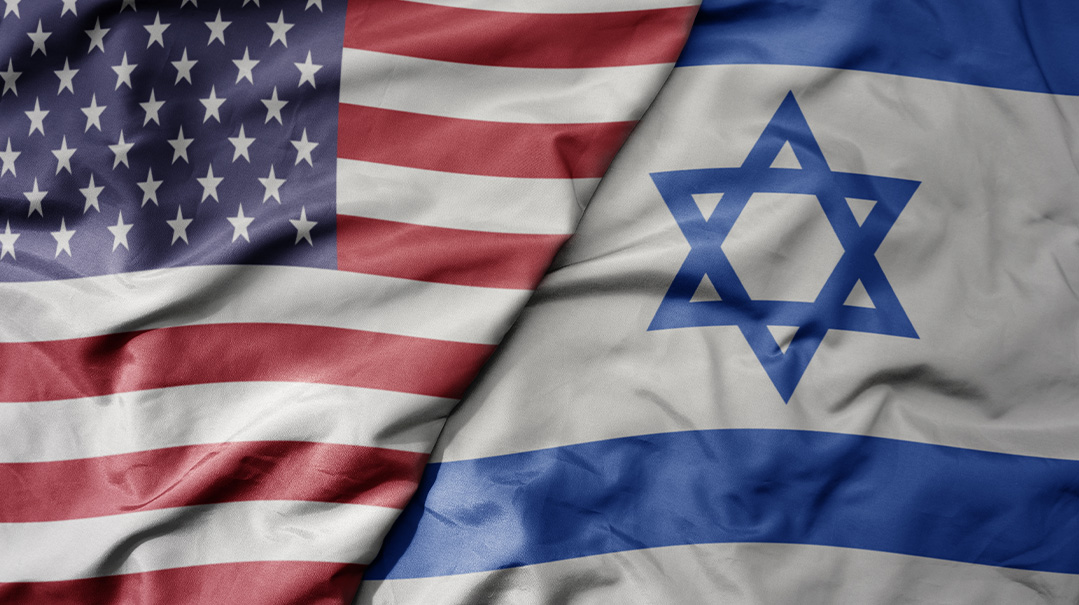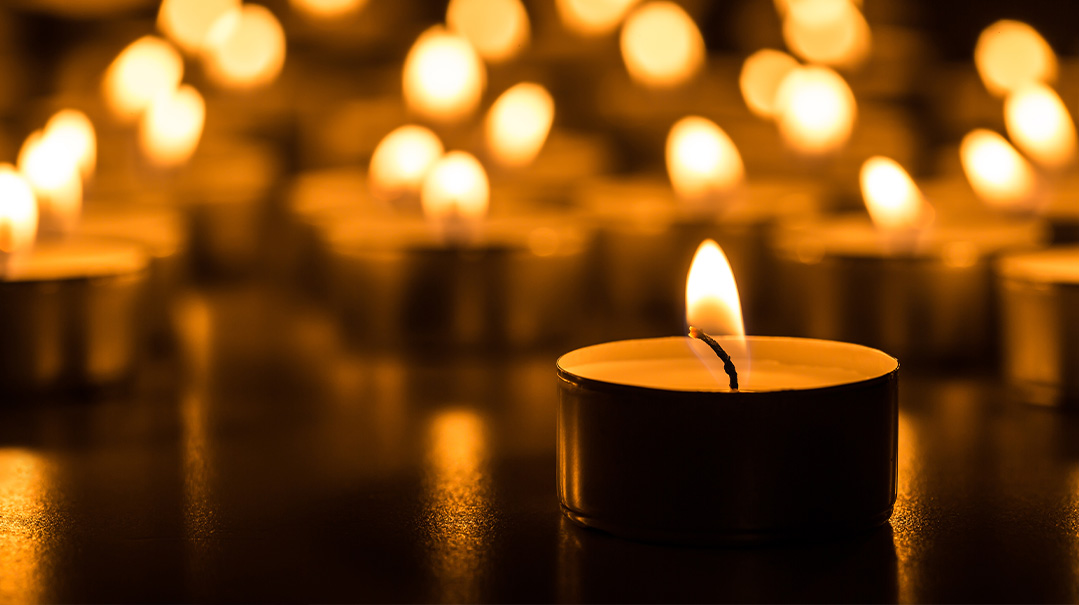Anti-Semitism Is Getting Me Down

The world’s obsession with Israel is but a new form of its obsession with the Jews
My Tishah B’Av reading consisted of Simcha Bunem Unsdorfer’s The Yellow Story: A Boy’s Story of Auschwitz and Buchenwald. Written very shortly after the war, The Yellow Star records in excruciating detail the daily life in the extermination camps, including the unrelenting sadism of the SS guards and officers. Like Solzhenitsyn’s A Day in the Life of Ivan Denisovich, the narrow focus on every aspect of the ordeal forces us to confront the enormity of the whole.
In the midst of my reading, a disturbing thought came to me: This is what those who accuse Israel of “genocide” mean. That thought soon gave way to outrage. The comparison of Israel’s efforts to halt Hamas missile barrages on Israel’s civilian population by destroying Hamas’s military infrastructure, almost all of which is deliberately located in civilian neighborhoods, to the industrial-scale, deliberate murder of 10,000 Jews a day in Auschwitz is obscene.
Chants of “Jews to the gas” or “Hitler was right” that were once heard only in European rallies against Israel have made their way to American campuses as well. On a daily basis, one reads of another assault upon identifiable Jews and Jewish institutions, from Poway to Pittsburgh to Monsey to Fort Lee to Boston.
But the physical threats are only part of the story — and I’m not sure the worst part. Anti-Semitism has gone mainstream, or is at least tolerated, in institutions that once would have been thought to be bastions against it. Here is a very small sample of some recent emails.
Over 100 Jewish professors at CUNY recently resigned from that university’s chapter of the American Federation of Teachers (whose Jewish president describes American Jews as “part of the ownership class”), after the chapter passed a resolution condemning the “massacre of Palestinians by the Israeli state.”
CUNY was once known as the poor man’s Harvard due to its large number of poor, brilliant Jewish students, and generations of yeshivah students attended its Brooklyn College branch at night. Today, adjunct professor Michael Goldstein has required police protection for three years while teaching at Kingsborough Community College, where his father served as president for more than three decades. Numerous Jewish professors at CUNY told the Washington Free Beacon that they have been subject to attacks from union leadership, colleagues, and students for years, including having car tires slashed, family photos destroyed, and Israeli flags stolen. An EEOC report from last February found that CUNY has fostered a hostile environment for Jews.
In June, the Yale College Council adopted by an 8-3 vote a resolution condemning the “ethnic cleansing and genocide in Palestine.” An anti-Zionist group of Jewish students and alumni issued their own statement of support for the resolution. Undergraduate Jewish students opposed to the resolution accused the YCC of exacerbating the anxiety already felt by Jewish students in the wake of a spate of physical attacks on Jews across America, and acts of vandalism against campus Hillels, including that at Harvard. And they noted the “dawning realization that anti-Semitism at Yale is not confined to the quota era of the past, but is a component of life for today’s Jewish students.”
At UCLA, another campus with a large Jewish population, the faculty of the Asian-American studies department issued a statement opposing “settler-colonialism in all its forms” and calling for an end to an end to all US support for Israel and for Israel to end its blockade of Gaza, occupation of the West Bank, and renewed assault against Palestinians.
Professor Judah Pearl, father of journalist Daniel Pearl, who was beheaded by Khalid Sheikh Mohammed, the principal 9/11 planner, in Karachi, Pakistan, in early 2002, tweeted to the UCLA chancellor: “When a student union is hijacked by BDS cronies, students suffer but the university continues to function. When an academic department is hijacked, the university is dismembered, marking the end of higher education.” A letter from the Ad Hoc Committee for Academic Integrity at UCLA, to which Professor Pearl was a signatory, noted that Jewish students, especially ones who are pro-Israel, are now on notice that they may suffer academically if they wish to take classes in Asian-American studies.
Meanwhile, many of the most active chapters of Students for Justice in Palestine (SJP), which regularly sponsor BDS resolutions and activities such as Israel Apartheid Week, are to be found on campuses with large numbers of Jewish students: Harvard, Columbia, University of Chicago, Brandeis, UCLA, UC-Berkeley, Rutgers, University of Illinois, University of Florida, and University of Texas.
And the effort to put Jewish students on edge is moving to the high schools. A bill moving through the California legislature would mandate an ethnic studies course for high school graduation. Governor Gavin Newsom threatened to veto an earlier version of the bill in the face of complaints that the Model Ethnic Studies Curriculum produced by the State Board of Education was blatantly anti-Semitic. It omitted any discussion of American Jews as a discriminated-against ethnic group, while trafficking in traditional anti-Semitic tropes.
But even with the revision of the model curriculum, the proposed legislation still allows individual school districts to choose their own curriculum, including something called the Liberated Ethnic Studies Model Curriculum (LESMC), which, for instance, refers to BDS as a global social movement to bring freedom to Palestinians living under apartheid. And many districts are likely to do so, given that the California Teachers Association endorsed the original model curriculum, and directs teachers to the LESMC.
The United Educators of San Francisco, representing all K-12 teachers in that city, has formally endorsed BDS, as have many chapter heads of United Teachers Los Angeles. Further, almost all the ethnic studies teachers are likely to be products of university departments of critical ethnic studies, which employs the same “intersectionality” analysis as critical race theory, in which Jews are “white adjacent” to oppressive power structures.
BOTTOM LINE, most Jewish students (and many non-Jews with Jewish names) can count on being confronted during college, and maybe even before, by angry fellow students demanding to know whether they are Zionists or not. Their inquisitors will not be inclined to listen to nuanced quibbles about Israeli settlement policies. The inquisitors’ question is more straightforward: Do you support Israel’s right to exist as a colonialist polity on the backs of the indigenous Arab population? Nor will the inquisitors be inclined to debate facts or historical rights and wrongs. Debate is not their thing. When there is one obviously one right answer, debate is merely a distraction and obfuscation.
How different this all is from my own experience growing up. Anti-Semitism played almost no role in my life through university. Yes, I knew that when my father came out of law school, Chicago had gentile law firms and Jewish ones. (Fortunately, many rich gentiles were happy to hire smart Jewish lawyers.) Even in Highland Park, my suburb, there were gentile and Jewish country clubs. But it was still a bit of a shock at eight to read in the children’s classic Hans Brinker, Or the Silver Skates: “Jacob looked into the Jewish diamond cutters section [of Amsterdam], and wisely decided to stay away.”
My Jewish identity was shaped more by the realization, when the Six Day War broke out in 1967, that I was much more emotionally involved in events in Israel than almost any of my Jewish friends. And that experience was repeated my first semester in law school during the Yom Kippur War.
The Holocaust was a recurrent subject in our home. But my only European-born grandparent came to America in the early 1900s, and there was no talk of relatives lost during the Holocaust.
I believed then (and still do) that the Anti-Defamation League was in the business of whipping up hysteria over every swastika on a barn door anywhere in America in order to rake in millions.
It never occurred to me that anti-Semitism imposed any limits on my future, either socially or professionally.
Born just six years after the end of World War II, when the horrors of the Holocaust were fresh, I was fortunate to grow up during a temporary hiatus in Jew hatred. Few wanted to be identified with the Nazis. But that period has long since ended. As a liberal British lord told the Spectator’s Penelope Wyatt in 2001, “Thank G-d, we can once again say what we want about the Jews.”
Israel is the pretext for saying what one wants about the Jews. The world’s obsession with Israel is but a new form of its obsession with the Jews.
In a list of 50 ethnic conflicts since 1948, the Israel-Arab conflict is near the very bottom in total casualties, with a little over 60,000. At least 12 of those conflicts claimed over a million lives. Yet Israel’s conflicts with its neighbors draw the vast majority of attention.
In recent years, 700,000 Tutsis were slaughtered with machetes by their Hutu neighbors in Rwanda; 400,000 black Muslims met a similar fate at the hands of co-religionists in Sudan’s Darfur region; and 600,000 Syrians lost their lives and millions more were dislocated in the Syrian civil war. Today, China has destroyed democracy in Hong Kong, and holds up to a million Muslim Uighurs in “reeducation” camps surrounded by barbed wire. Did any of these atrocities elicit a peep of protest on any college campus, much less endless demonstrations?
Israel is the only country in the world whose right to exist remains in question, both explicitly and implicitly. Denying the legitimacy of any means of self-defense to Israel is ipso facto a denial of its right to exist.
Confronting the world’s obsession with Israel increasingly feels like being locked in an insane asylum, with the number of inmates constantly growing. And that is getting me down.
(Originally featured in Mishpacha, Issue 872)
Oops! We could not locate your form.

